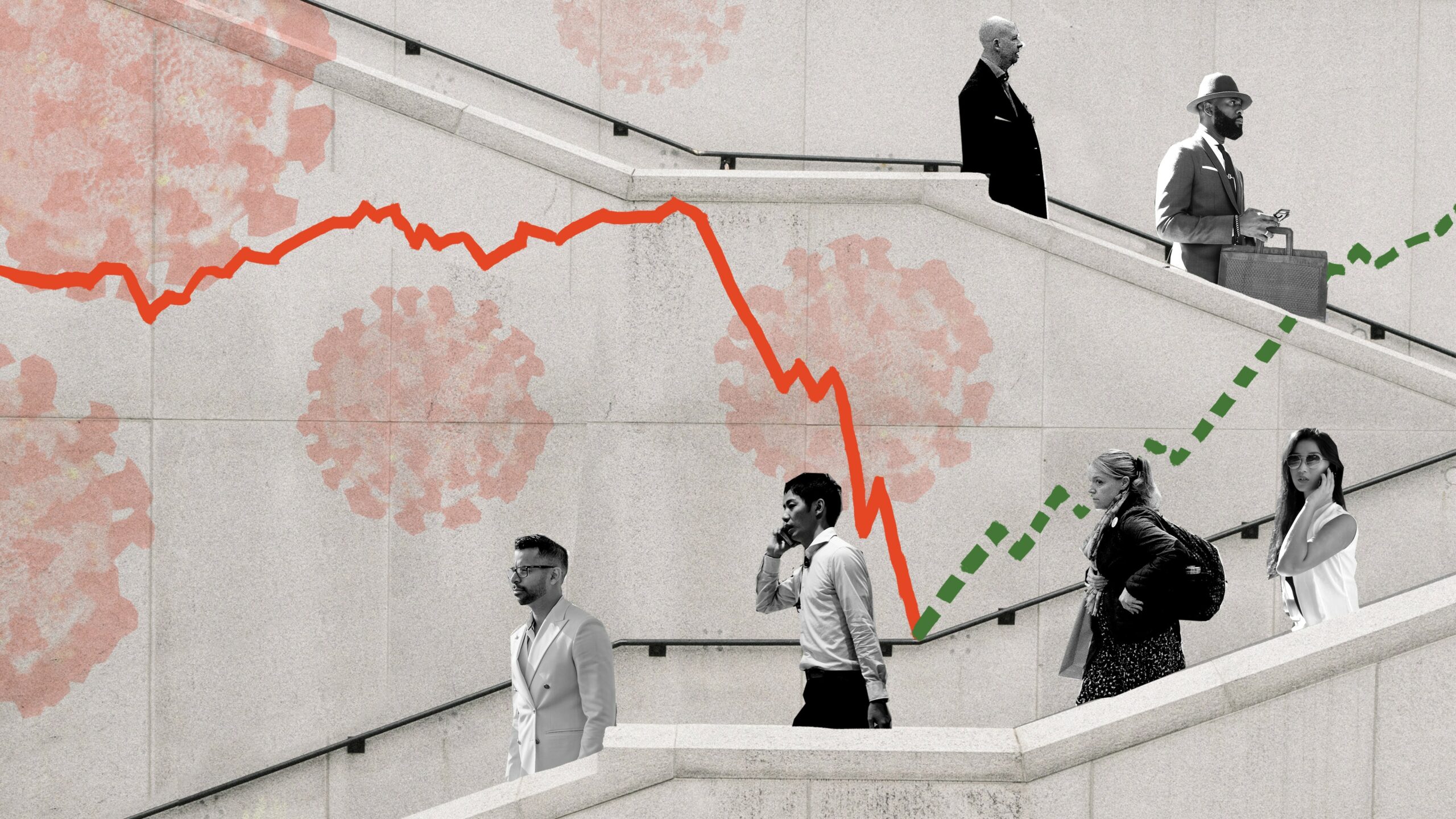Sandra Peter and Matthew Beck

Urban mobility on Corona Business Insights
It only takes sixty days to form a habit, so after nine months of people working from home, how is transport changing in our cities? We talk with infrastructure expert Associate Professor Matthew Beck on how COVID-19 is reshaping urban mobility.
As COVID-19 sets out to change the world forever, join Sandra Peter and Kai Riemer as they think about what’s to come in the future of business.
Shownotes
Matthew Beck’s biography and research overview
The Institute of Transport and Logistics Studies
Transurban: urban mobility study from COVID-19
Google’s COVID-19 mobility reports
US public transport doomsday service plans
WFH rebellion from weary commuters who don’t want to return to the office
Discriminatory pricing used to encourage more public transport use across peak
People plan to drive more in the future… but also fly less
How disasters shaped great US cities
Research on COVID-19 by the Institute of Transport and Logistics Studies
The early days under restrictions
The early days of easing restrictions
COVID has proved working from home is the best policy to beat congestion
What changes in WFH tell us about future transport and land use agendas
This episode is part of a podcast series covering what COVID-19 will mean for the business world, where we look at the impact on the economy, businesses, industries, workers and society. This is part of our ongoing coverage of the impact of COVID-19 on the future of business.
Follow the show on Apple Podcasts, Spotify, Overcast, Google Podcasts, Pocket Casts or wherever you get your podcasts. You can follow Sydney Business Insights on Flipboard, LinkedIn, Twitter and WeChat to keep updated with our latest insights.
Send us your news ideas to sbi@sydney.edu.au.
Dr Sandra Peter is the Director of Sydney Executive Plus and Associate Professor at the University of Sydney Business School. Her research and practice focuses on engaging with the future in productive ways, and the impact of emerging technologies on business and society.
Matthew is Professor of Decision Making and Choice at The University of Sydney Business School in the Institute of Transport and Logistics Studies. His research focusses on behavioural economics and modelling.
Share
We believe in open and honest access to knowledge. We use a Creative Commons Attribution NoDerivatives licence for our articles and podcasts, so you can republish them for free, online or in print.
Transcript
Intro From The University of Sydney Business School, this is Sydney Business Insights.
Sandra And this is Corona Business Insights, I'm Sandra Peter. And we're back unpacking the impact of COVID-19 on business, the economy, industry, government, workers and society, and looking at the effects of the pandemic. And this podcast is part of a larger initiative by The University of Sydney Business School. You can find our COVID business impact dashboard online sbi.sydney.edu.au/coronavirus. And today I'm joined by Matt Beck. Matt is an Associate Professor in infrastructure management here at the University of Sydney at the Institute of Transport and Logistics Studies, where he looks at infrastructure decision making and human choice, with particular reference to transport choices. Welcome Matt.
Matt Thanks, Sandra.
Sandra We have him here today to talk about urban mobility and how this has changed across the course of the pandemic. But first of all, what do we mean by urban mobility?
Matt Urban mobility just simply refers to the way in which people move around their environment, particularly in this instance the urban environment, trying to understand the choices that they make, in the actions that they undertake day to day.
Sandra Obviously, COVID-19 has impacted every area of the economy more than any other event in recent history. How has urban mobility changed across the course of the pandemic?
Matt Well, it's had a very significant impact on the way in which people move, first and foremost internationally, the way that we travel around the globe has clearly come to a complete standstill. But within the countries of the globe, there are different approaches and different impacts of COVID-19 on the way that people move around those urban environments. From large parts of America, where very little has changed, to places like the UK that have been half in/half out in terms of getting people to stop moving and getting people moving again. Places like Taiwan that have really had no slowdown or change and have combated COVID-19 in a very different way to other places in the world. And of course, places like Australia and New Zealand, very early on, recognised that the primary way to stop the spread of COVID-19 was to stop the spread of human activity. That the virus only transmits through human to human contact, and so if we could keep people apart, then that would be our first and best line of defence in suppressing any catastrophic growth of COVID-19. So, very early on in the piece, the Australian Government, through the formation of National Cabinet, took a unified and consolidated approach across the whole of Australia to create regulatory environments to deliberately suppress the movement of people, and thus the spread of the disease.
Sandra And this was very different to what we've seen happen elsewhere in the world, there were very few countries that took similar steps, places like New Zealand or China, but in most of the rest of the world, this hasn't happened to this day.
Matt Correct. In most other jurisdictions, there's been no formalised policy to completely nationwide restrict the movement of people. So if we look at the countries that have combated COVID-19 the best, the majority of them are Asian Pacific countries. The standout performers have been places like Taiwan, Seoul, to a lesser extent, Japan, Hong Kong. These are all urban environments that are very used to travelling in a way that is more hygienic than say, a typical Western economy. So these Eastern philosophies of others above self means that in a lot of these places, they were well used to travelling with masks, to staying at home if sick. Whereas in places like Australia, and other places where COVID has not been fought so successfully, there's a different approach to travel and a different approach to the individual and their role within the society.
Sandra But this also means that as we came out of the pandemic, we had different patterns of re-joining transport. In places like China, we pretty much see things having gone back to the way they were before the pandemic hit. People do get on crowded trains, they go to work, very few of them work remotely. But in Australia, that's been quite different.
Matt Yeah, so we have a slightly different economic and government structure to a place like China. But in Australia, the primary response to combating COVID-19 as I said, was to restrict the movement of people. And in large effect, there have been regulations in place up until the end of last week, where finally in New South Wales the health regulation about working from home was removed, and now employees can be asked or required to travel to their workplace. But predominantly, our government has put in place systematic regulations to stop people from moving, wherever possible.
Sandra What did this mean for how much we rely on our cars, or what happens to trains and buses and public transport?
Matt Unfortunately, what we have seen is, because of health concerns, large-scale reduction in the use of public transport modes, and most recently, a return to car driving behaviours which had otherwise been suppressed, particularly in the early phases of the pandemic where people were not travelling as much as they are now.
Sandra And is this because we're not used to travelling with face masks, or because of health concerns primarily?
Matt I would put it down to health concerns primarily. So in the work that we've been doing, we've been looking at people's concerns towards public transport over time, and at the immediate beginning of the pandemic in late March, around 80% of people around Australia expressed moderate to extreme, 60% extreme concern about public transport. Today that number's about 50%, who are either moderately or extremely concerned, with about 30% being extremely concerned. So that's quite a significant reduction from the highs of the initial outbreak. But still, it's a very large amount of people who are concerned about public transport because of hygiene related to COVID-19. And because of the numbers of other people that are using public transport, also related to COVID-19.
Sandra So how does that translate into people actually taking public transport or being on public transport?
Matt So public transport still to this day sits about 40% below usage at this time, last year, whilst car has returned back to almost 100%, those still a little bit under which is important, which no doubt we'll talk about. But the perception around public transport and the need for social distancing has meant that public transport by and large is now seen as a far lesser alternative in the transport choice matrix than it has been in the past.
Sandra But people are still travelling. What are they using to get to and from work? Because we have discovered the love of cycling and so on during lockdown, but that hasn't really stayed with us, has it?
Matt In mixes. So what we have discovered certainly is that people have been cycling and walking more for recreation and exercise, that is definitely true. That's a separate activity that's important, but different to travelling to work. And for the vast majority of people, the biggest component of their day to day travel is their commute to and from work. Now, if you live in an urban environment and work within that urban environment. And even in regional places, this is also true, we have seen a mode shift towards active modes for people that live short distances. So by active I mean walking, cycling. On the other hand, what we see for people who are not currently commuting, i.e. people working from home, they tend to be people who work a longer way away from home. Indeed, there's preliminary evidence that the further away you live from where you work, the more likely you are to work from home, for obvious reasons, you get to save considerable time by not travelling to work. Those people who in the past may use public transport, as they return to work and as concerns about public transport stay high, might choose to travel by the car, i.e. even though people are still working from home, car use is returning far more quickly, because people are choosing to use the car more often than they did in the past.
Sandra So indeed, you mentioned that car use is almost back to what it was before the pandemic, so at this time last year.
Matt We're looking at roughly about 94% of what it was this time last year. So that's just an aggregate statistic. There are problems with aggregating obviously, that's just one number. We don't know when those trips are being taken. So one of the things about being able to work from home, and this new mobility future or environment that we're looking at is that people, because they can do more work from home now, are also able to be more flexible and when they do choose to travel to and from work. So people could be using their car more, but that aggregate car use could be spread over wider times of day. And additionally, the problem with the transport network and the reason that we get congestion is that in many instances, particularly in the peak, the transport network is exhausted. So there's too much people on the road or the rail or the bus network, and that causes congestion. The minute there's a hiccup, the system has no resilience, no spare capacity to respond, there's spillbacks, and traffic and congestion starts to occur. In any system that is at capacity, if you can provide any spare capacity to that network, it doesn't matter if it's transport, it could be water, it could be electricity. The minute that the system has spare capacity, that system can respond more quickly to disruption. So even small savings in the number of people using their car or using the roads, can create significant nonlinear improvements in the way in which the transport network behaves.
Sandra So what's the expectation for longer-term post-pandemic impacts?
Matt The very key thing that we've been studying in ITLS is the relationship between this mass experience that many people have been having with working from home, how that can have a positive impact on the transport network, and then how do we account for working from home in predicting transport demand? But equally, how do we make sure that working from home is something that stays in the workplace mix for a far greater percentage of people than has been the case in the past? By far and away, the biggest and most palatable lever for tackling congestion is working from home. Working from home works for people, we've shown in large scale that it can work for organisations, if we can maintain working from home as a viable component of the 'travel/commute choice mix', then by removing them from the transport network, the network has more capacity, the network flows more freely, people that use the network have benefits, people that work from home have benefits. And the government doesn't have to spend billions upon billions of dollars investing in new roads, which always need to be built in somebody's backyard.
Sandra But again, the question is, does that hold? So that was the case with all the restrictions in place, and with the government urging people to continue to work from home...
Matt And I also gather that what you're trying to ask is that, given the experiences that we have, is it realistic to think that working from home will continue into the future?
Sandra Yeah, or in what way? Like, what do we expect?
Matt I mean, there's a mix of that, right. So some of the things that we've been looking at around working from home and what works for people and what doesn't work. Clearly if you've got your own space at home, and if you've got the right equipment at home to work from home, the experiences more positive. So there are implications long-term about house design, and about creating space within urban environments for working from home. But people have always adapted their home and their work to suit their preferences. In terms of whether or not working from home would be something that continues into the future, that is a very good question. We know that human beings are habitual. But what there is very little research out in the vast majority of human behaviour literature is research on how long it takes for habits to form. The one literature that examines it most closely is the health literature, because they're always interested in how long does it take for people to adopt new behaviours that are better and healthier for them?
Sandra Give up smoking.
Matt Correct, yes.
Sandra Or eat healthy food, or workout.
Matt So the only literature that we've been able to find in searching for how long does it take for new habits to form has been in the health literature. And that suggests that around 60 days, is how long it takes for people to develop new habits. So unlike other disruptions in the past, outside of world wars, in 'recent times', COVID-19 represents a disruption on a scale in terms of time, duration, magnitude and shock. As you said in the intro, we've not seen. We are now in month nine of dealing with COVID-19, and for people that have been working from home, month nine of working from home. That's a very long period of time, far greater than 60 days. So there is some reason to expect that people are developing new habits and new routines that they are bedding down in their day to day travel behaviour choices and patterns. They're developing new habits around working from home and doing so successfully. We've been looking at the productivity of people working from home. And our study in June July. And our most recent results that we finished analysing in the middle of November, indicate that productivity has been unchanged between those two time periods. And the vast majority of respondents that we've been tracking over these last nine months, have indicated that working from home has been a positive experience for them. And if anything, that attitude has solidified over time, not eroded. If we can just get around five to 10% of people off the transport network on any given day. It does have significant impacts on that network. Over half of the respondents in the studies that we've been conducting, say that some of all of their work can be done from home. So if they do one day, a week from home, working on the stuff that can be done from home, that's probably good for them. Definitely good for the transport network and would definitely be good for us as a society in terms of a much broader suite of objectives that we're trying to pursue.
Sandra So a job not just for us to make those choices, but for businesses and employers to enable those choices.
Matt Yes, one of the key things that we learnt about COVID-19 is that if institutions cooperate, then significant changes can be made. National Cabinet was Federal/State Government, business, working together to solve a problem. When our institutions work together, we can solve problems.
Sandra Matt, thank you so much for talking to us today.
Matt My pleasure.
Sandra And that's all we have time for today. This has been Corona Business Insights. Thanks for listening.
Outro From The University of Sydney Business School, this was Corona Business Insights, the podcast that explores the future of business in the wake of the global pandemic.
Close transcript







